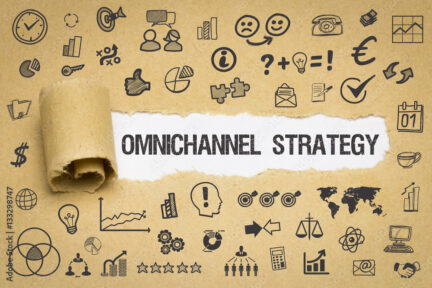E-COMMERCE IS ONE OF THE SALES CHANNELS
Mister Spex, a leading German company in the sale of eyewear online – €210 million in 2022 (+8% on 2021) – has been growing steadily since it was founded in 2007. However, it still operates at a loss. The decision to push for the opening of several traditional stores (about 70) could then be interpreted as a change of strategy: with e-commerce you grow but you don’t earn, therefore it is necessary to return to the traditional brick-and-mortar store.
In fact, the free returns policy was a way to get Mister Spex’s online sales off the ground like many other e-commerce businesses – especially in the fashion industry – but to the detriment of profitability. Experts in the optical industry know that being able to offer an eye test – which you can only do in the store – gives added value to the product. Just as the sale of bifocals – which is the one that gives the highest margins – can only be done in a real store. As much as Mr Spex had invested in the site’s customer experience, these aspects were not covered, hence the decision to invest in stores as well.
This story leads me to reflect on the fact that e-commerce is not in crisis – as some people say – and that we are returning to the traditional shop. Today a modern company – compatibly with its strengths – must be able to manage what is called multi-channel.
A McKinsey report states that more than half of customers use three to five channels during each path to purchase: managing this flow of information, and building on it advanced customer experiences to respond to what customers really want, determines a company’s success.
MULTICHANNEL OR OMNICHANNEL?
Here’s the difference:

- Multichannel means offering customers different ways of interacting with the company, such as telephone, e-mail, chat, social media and all other digital channels. The goal is to give the customer the opportunity to choose the channel he prefers to communicate with the company.
- Omnichannel is a step forward. Here the company integrates all communication channels into one coherent experience. Regardless of the channel used, the customer will be able to switch from one channel to another without losing the continuity of the experience. A good challenge
CUSTOMER EVOLUTION, TECHNOLOGICAL INNOVATION AND IMAGINATION
I’ll start with another example.
Bofrost, a multinational company known for door-to-door sales of frozen foods, has opened two stores in the center of Milan where: it is possible to shop and have a space for those who want to eat there. In addition to this, “dark kitchens” are also operational where dishes are prepared and then delivered by the various delivery platforms. If the experiment is successful, it is expected to open in other cities.
The evolution of today’s lifestyles must push companies – in every market area – to review sales strategies and channels. In my opinion, here is the logical path to take (regardless of company size):
- Evolution of the customer: lifestyle changes, the family model changes, there is more attention to the aspects of sustainability and the clientele is increasingly diversified (also the result of continuous ethnic mixing).
- Walking hand in hand, technological evolution continuously offers new solutions that can be adopted in the marketing field; both online and offline. On the Mister Spex website, for example, it is possible to measure the size of the head and pupil via smartphone. And even when we talk about opening physical stores, we have to imagine a huge effort to rethink these spaces. Retailers are aware of the need to raise the level of service to offer customers a personalized and engaging shopping experience and thus counter the disaffection from the physical point of sale caused by the exponential growth of online, especially after the pandemic.
- By mixing this market information and the continuous technological innovations that impact marketing, we should continually critically review our marketing mix: product, price, channel and communication.
We are talking about the usual scheme of the 4 Ps of marketing, which have always been the same since 1960. In the meantime, however, the world has changed!
To learn more about these issues, I recommend my book 8 Digital Tools for SMEs: A Manual for Improving Export Strategies, co-written by Claudia Zarabara.
